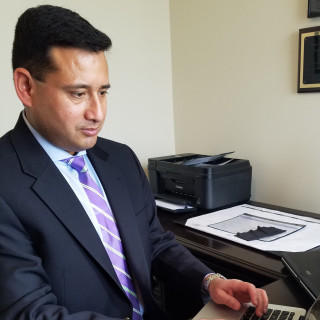
The thought of suicide is a great consolation: by means of it one gets through many a dark night.
– Nietzsche
Suicide is a global phenomenon and occurs throughout the lifespan. The World Health Organization (WHO) estimates that each year approximately one million people die from suicide, which represents a global mortality rate of 16 people per 100,000 or one death every 40 seconds. It is predicted that by 2020 the rate of death will increase to one every 20 seconds.
In 1998, the United States Congress recognized suicide as a national problem. In 1999, then-Surgeon General David Satcher issued a report on the state of mental health in the country and called suicide “a significant public health problem.” The data at that time showed about 30,000 suicides a year. According to a recent Centers for Disease Control and Prevention (CDC) report, more than 47,000 Americans killed themselves in 2017. In 2016, nearly 45,000 died by suicide. A person dies by suicide about every 11.7 minutes in the United States. After accidents, suicide is the second leading cause of death between ages 25 and 44. In the U.S., the combined number of deaths from drugs, alcohol or suicide per 100,000 people increased by 51 percent from 2005 to 2016. The increased mortality from these causes has contributed to a decline in average life expectancy at birth in the U.S. for two years running.
Americans are more than twice as likely to die by their own hands, of their own will, than by someone else’s. The lack of compassion people feel for those who die by suicide is reflected in the lack of funding. Congressional support is key because it affects the overall National Institutes of Health (NIH) budget. Despite the escalating suicide-related death toll, as depicted in federal data analysis, NIH, the largest public funder of biomedical research in the world, spends more money studying diseases associated with substantially less mortality than suicide, but also studying technology related to manipulation of individual atoms and molecules. For example, the NIH spent $68 million on suicide last year, which is one-twelfth the amount it spent studying eye disease and vision disorders and one-seventh the amount studying nanotechnology.
A decision to attempt suicide is often made quickly, in an impulsive way. Suicide is associated with strong emotional repercussions for survivors and for families of its victims. The media’s tendency to sensationalize mass shootings and downplay suicides is not only counterproductive but also defies research. Recent research adds to extant data that shows the number of suicide decedents dwarfs the number of mass shooting victims. Since 2000, more than 1.5 million people in the United States have been injured by a firearm, and 500,000 have died. Of these gun deaths, 59 percent were suicides and 37 percent were homicides; mass shootings accounted for less than one-tenth of one percent. (1)
Suicide can be caused by a constellation of factors, including mental health conditions, substance use, physical health, problems in relationships or occupation, and financial, legal, or housing stress. The CDC’s June 2018 Vital Signs report indicates that 54 percent of people who die by suicide do not have a known mental health condition. And, firearms are the preferred method, both for those with and without known mental health conditions.
I wonder: if psychological autopsies were done on decedents not known to have a mental health condition at the time of suicide, what proportion would display some form of mental anguish? The word palliation is derived from Latin palliare, which means “to cloak.” Modern medicine is mostly palliative, as medical professionals tend to reduce or ease the severity of pain or disease without removing the cause, or effecting a cure.
All of us aspire for a paradigm shift from control and palliation to prevention and cure. Mental illness is no exception. With growing understanding of mental and physical illnesses, we have come to appreciate the interplay between inadequately or untreated mental illness and chronic, disabling diseases (e.g., diabetes, high blood pressure, seizure disorders, back pain, etc.). Mental-medical comorbidity often leads to lack of treatment or patient non-compliance with recommended treatment.
Suicide rates have increased in nearly every state over the past two decades, and half of the states have seen suicide rates go up more than 30 percent. In order to curb gun-related mortality, the national conversation about gun violence and mass shootings which tends to be fear- and emotion-driven, needs to incorporate measures to prevent suicide.
Research indicates that preventing mass shootings altogether would have saved approximately 500 lives between 2000 and 2016; preventing gun suicides would have saved 319,000 during the same period.
People battling suicidal thoughts feel relieved when someone asks about them in a caring way. Helping a person at-risk of suicide connect to a support system can reduce feelings of hopelessness and helplessness. Suicide prevention efforts need to target not only those who are contemplating suicide, but also those who have made an attempt on their life. A first suicide attempt is a greater risk factor for a completed suicide than previously appreciated—and the great majority of completed suicides occur within one year of the first attempt.
Besides suicide, our generation is witness to substantial mortality caused by the opioid epidemic. For prevention efforts to be effective, perhaps we might benefit from readjusting our cognitive outlook towards mental illness and substance use disorders. Moral approbation associated with suicide, or attributing substance use disorders to lack of will or desire to quit, prevents us from developing insight into these rather complex problems.
References
- Injury Prevention and Control: Data and Statistics. Web-Based Injury Statistics Query and Reporting System (WISQARS). Fatal Injury Data and Nonfatal Injury Data. Atlanta, Centers for Disease Control and Prevention, 2018.
Dr. Negi is a Diplomate of the American Board of Psychiatry and Neurology, Inc., certified in Psychiatry, Child and Adolescent and Forensic Psychiatry. He is the Clinical Director of the Juvenile Section at the Circuit Court in Baltimore City and an adjunct assistant professor in the Department of Psychiatry at the University of Maryland School of Medicine.







